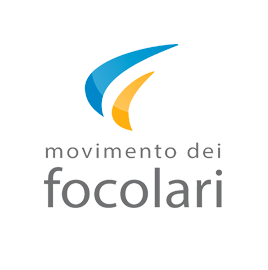Rocca di Papa, 23 December 1983
Jesus revealed himself to Chiara as crucified and forsaken. The origin of this inspiration which is so vital for her and her Movement is described here
(…)
We have in fact felt the urgency not only of a legitimate desire, but also of the Church’s guidance – which, to safeguard the authenticity of their inspiration, invites religious families and movements to refashion themselves in conformity to the times when the Holy Spirit brought them to birth.
When we look back to the beginnings of the Focolare, we see that, even before we had acquired ideas about the way to realize unity, a model was proposed to us, a figure, a life: that of Him who was able to truly “make Himself one” with all the human beings who have lived in the past, live now in the present, and will live in the future; He effected unity, paying for it by the cross, with His blood and His cry; He who has given His presence to the Church as the Risen One for all time, until the end of the world: Jesus Crucified and Forsaken.
His reality, and our understanding of Him, preceded, even in time, every other consideration. If we are right to keep the 7th of December 1943 (the date of my consecration to God) as the beginning of our story, we have to remember that on the 24th of January, 1944, Jesus Forsaken had already presented Himself to our mind and to our heart.
But let us proceed in proper order.
As we have done for “unity,” so too for Jesus Forsaken, to recall the first thoughts we had about Him we will look to the remembrance of episodes and circumstances, and to the reading of the notes we have kept. They are familiar events and thoughts, but we need even today to pass them in review, for the sake of a more complete analysis of this theme.
A first episode was the encounter with Jesus Forsaken at Dori’s1 house, an encounter which this time we will let her describe herself.
She tells: “We went in search of the poor and it was probably from them that I caught an infection on my face. I was covered with sores and the medicines did not halt the disease. But, with my face appropriately protected, I kept on going to Mass and to our Saturday meetings …
“It was cold, and to go outside under such conditions could be bad for me. Since my family would not let me go out, Chiara asked a Capuchin priest to bring me Communion. While I was making my thanksgiving, the priest asked Chiara what was, in her opinion, the moment of Jesus’ greatest suffering during His passion.
She replied she had always heard that it was the pain He felt in the Garden of Olives. Then the priest remarked: ‘But I believe, rather, it was what He felt on the cross, when He cried out: “My God, my God, why have you forsaken me?” (Mt 27:46).’
“As soon as the Father had left, having heard Chiara’s words, I turned to her, feeling sure of some explanation. Instead, she said: ‘If Jesus’ greatest pain was His abandonment by His Father, we will choose Him as our Ideal and that is the way we will follow Him.’
“At that moment, in my mind, in my imagination, the conviction impressed itself that for us our ideal was the Jesus of the contorted face crying out to the Father. And my poor facial sores, which I saw as shadows of His pain, were a joy to me, because they made me resemble Him a little. From that day on, Chiara spoke to me often, in fact constantly, of Jesus Forsaken. He was the living personality in our lives.”
…
This stood for a unique, radical choice: Jesus Forsaken.
Our letters at that time used to underline this:
“Forget everything … even the most sublime things; let yourself be ruled by a single Idea, by one God, who must penetrate every fibre of your being: Jesus Crucified” (21 July 1945).
“Are you familiar with the lives of the saints?… They were a single word: Jesus Crucified; … Christ’s wounds were their resting-place; Christ’s blood was the health-giving bath of their soul; the wound in Christ’s side was the casket that they filled with their love.
“Ask of Jesus Crucified, in the name of His heart¬rending cry, a passion for His passion.
“… He must be everything for you” (21 July 1945).
Jesus Forsaken was the only book we wanted to read.
“Yes, true enough, I’m going to college, but there isn’t any book, no matter how beautiful and profound, that gives my soul such strength and above all so much love as Jesus Crucified.” (7 June 1944).
And again:
“But above all, take instruction from one book… Jesus Crucified, who was abandoned by everybody. He who cries out: `My God, my God, why have you forsaken me?’ Oh! if that divine face, contorted in agony, those reddened eyes, which still look on you with kindness, forgetting my sins and yours, which reduced Him to this, could be always before your gaze! .. .” (30 January 1944).
This radical choice was renewed from time to time in the years that followed.
A letter of 1948 says:
“Forget everything in life: office, work, people, responsibilities, hunger, thirst, rest, even your own soul … in order to possess nobody else but Him! This is everything … to love the way He loved us, even to the point of feeling forsaken by His Father for our sake” (14 August 1948).
And in 1949: “I have only one Spouse on earth, Jesus Forsaken. I have no other God but Him.”
And so we knew nobody else but Him. We had no desire to know anyone else. The Holy Spirit said to us over and over: “I know nothing but Christ, and Him crucified.” Love for Him was exclusive: it permitted no compromises.
The choice of God, which was characteristic of the first step we took in our new way of life, became more specific: for us, to choose God meant to choose Jesus Forsaken.
1 Dori Zamboni, one of the first women in the movement
(Published in: Chiara Lubich, Unity and Jesus Forsaken, New City Press, New York 1985)
Audio Part 1
Audio Part 2
Video in italian

